 Omnigating the Semantic Web Omnigating the Semantic Web
Using the Omnigator as an RDF Browser
The Omnigator is a generic Topic Maps browser that lets you browse any topic map. Now, with Version 007, you can also browse RDF data as though it were a topic map. This document explains how.
You need to have Java installed (version 1.3 or higher). Unless you need the SDK for some other purpose, we recommend using the JRE (Java Runtime Environment) J2SE. To install the Omnigator, fill out the form, then download and run the .jar file. An installer will guide you through the installation process.
Now you need some RDF data. Our example uses the glossary from the XML Recommendation. Download this file, and place it in the topicmaps directory under {$omni}/jakarta-tomcat/webapps/omnigator/WEB-INF/ (where {$omni} is the directory in which you installed the Omnigator).
Now you're ready to try the Omnigator. Start Tomcat by running {$omni}/jakarta-tomcat/bin/startup.bat (or .sh) and then go to the Omnigator Welcome Page (http://localhost:8080/omnigator) , where you'll see a menu bar of the Omnigator shown below.
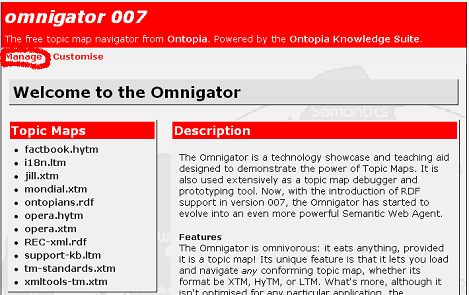
Clicking on Manage in the menu bar results in the fol-lowing screen:
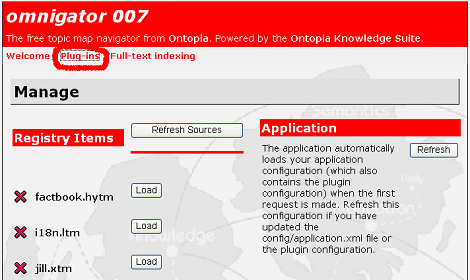
Clicking on Plug-ins in the menu bar results in the following screen:
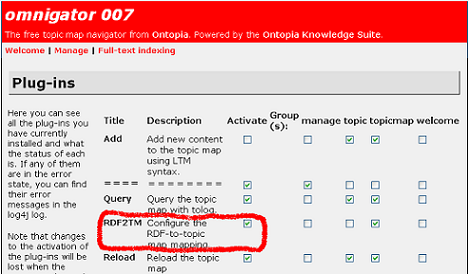
In order to activate RDF2TM (RDF-to-Topic Map map-ping) plug-in, check the Activate check box of the RDF2TM line and press Apply button. Again, go to the Omnigator Welcome Page, where you'll see a list of topic maps like the one shown below.
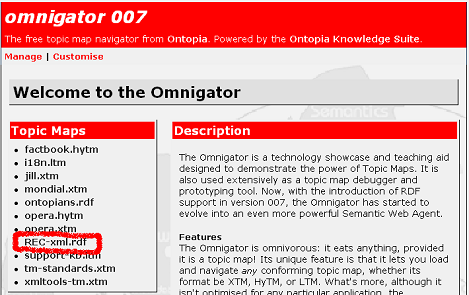
Clicking on REC-xml.rdf results in the following screen:
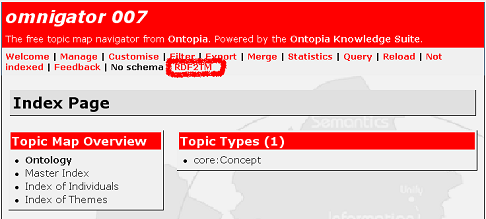
So far the topic map doesn't have much content. This is because the Omnigator doesn't yet understand this par-ticular RDF vocabulary and so most of the RDF data is ignored (It does understand the rdf:type property, though, which is why “core:Concept” is shown as a topic type.) However, the RDF2TM link lets you fix that. Clicking on it takes you to the page shown below.
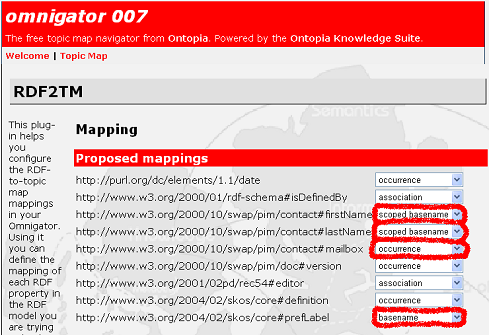
The page comes up with the Omnigator's best guesses for the mapping of each RDF property to a Topic Maps construct, but these guesses can also be improved. The screenshot shows the optimal choices. If you select these, the result when you press the Save button is as follows:
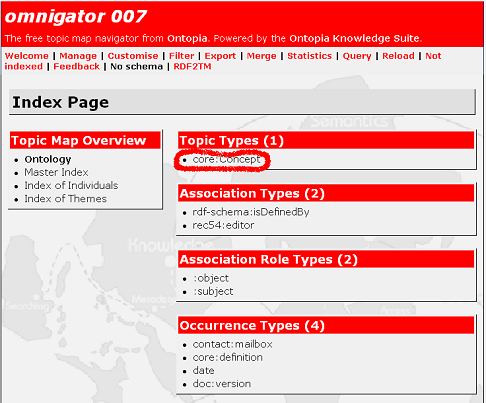
As you can see, there is now much more information on the page. Clicking on “core:Concept” will take you to a list of the concepts defined by the RDF file (which is a glossary).
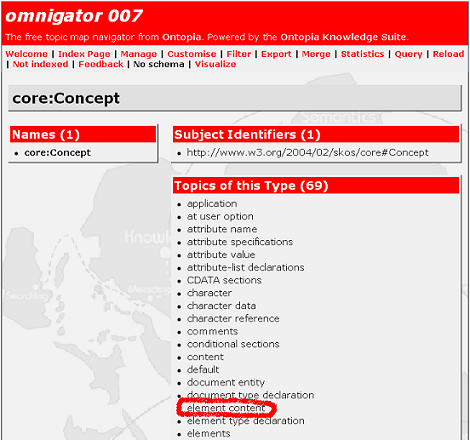
Clicking on “element content” will then take you to the following page:
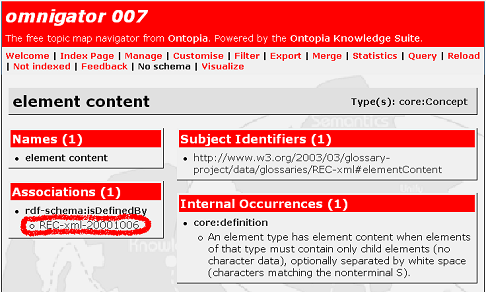
The page shows everything that is known about the concept: its name and type, its DefinedBy relationship with the XML Recommendation, and the definition it-self. Clicking on the XML Recommendation takes you to the page below:
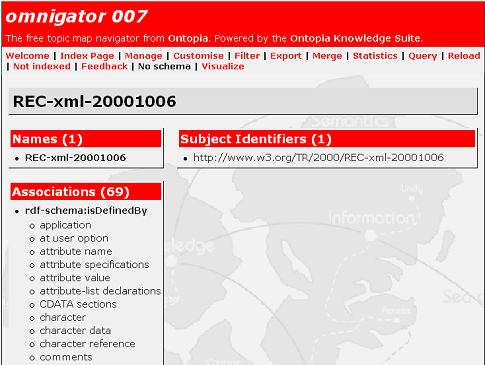
This shows basically how it works. Given an RDF file, any RDF file, you can put it into the Omnigator, quickly configure it, and then browse around as you like. It really isn't any more complicated than this.
Technical Note:
The Omnigator's implementation of RDF/Topic Maps interoperability is based on the ideas in Lars Marius Garshol's article Living with Topic Maps and RDF. The vocabulary itself is specified in The RTM RDF to topic maps mapping.
|

